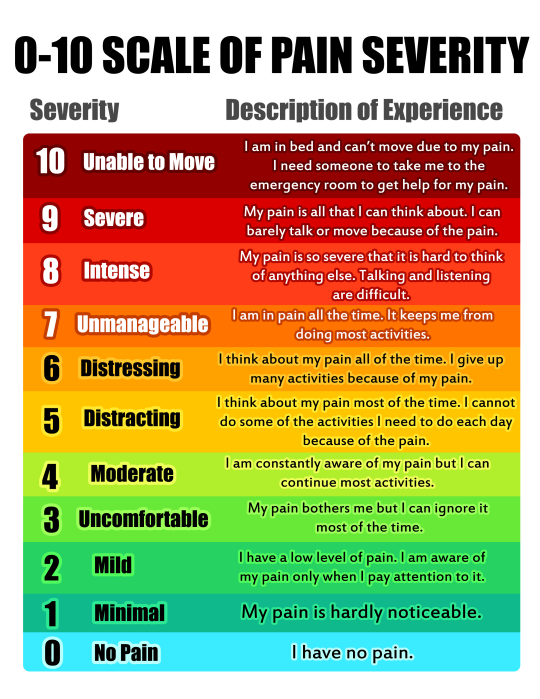
There are numerous pain scales used in medicine. Unfortunately, most are simple numbers and/or faces, many with no words describing the intensity of the pain. The problem is that most numeric scales are wildly subjective, with each patient choosing their own range of what "highest pain" versus "lowest pain" means to them.
I much prefer the pain scale created by Bonnie Eisenman, who is someone who deals with chronic pain. Each level has a short description accompanying each level. This makes it much easier to have a common understanding about what each pain level means, and to clearly communicate about pain:
10) Unable to move — I am in bed, and cannot move. I need to be taken to the ER.
9) Severe — My pain is all that I can think about. I can barely talk or move because of the pain.
8) Intense — Hard to think of anything else. Talking and listening are difficult.
7) Unmanageable — I am in pain all the time. It keeps me from doing most activities.
6) Distressing — I think about my pain all the time. I give up many activities because of my pain.
5) Distracting — I think about my pain most of the time. I cannot do some activities each day.
4) Moderate — I am constantly aware of my pain, but can continue most daily activities.
3) Uncomfortable — My pain bothers me, but I can ignore it most of the time.
2) Mild — I have a low level of pain. I am aware of it only when paying attention to it.
1) Minimal — My pain is hardly noticeable.
0) No pain.
It is common for doctors to dismiss and gaslight patients experiencing pain, so it's important to be able to communicate clearly about our "subjective" experiences.